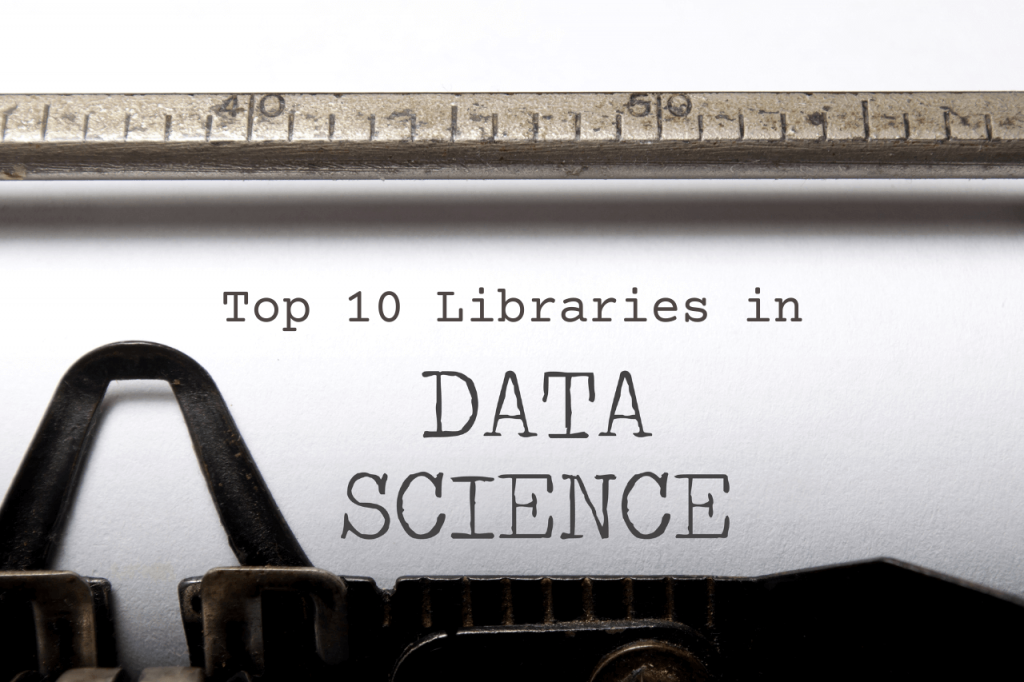Python has emerged as a powerful programming language for data science, offering a vast ecosystem of libraries that facilitate various aspects of data analysis, visualization, and machine learning. In this article, we will explore the top 10 Python libraries for data science in 2023, covering their key features and use cases. Whether you are a beginner or an experienced data scientist, these libraries are essential tools that can enhance your productivity and empower you to extract valuable insights from your data.
You’re reading the article, Top 10 Python Libraries for Data Science in 2023.
Top 10 Python Libraries For Data Science
NumPy: NumPy is a fundamental library for numerical computing in Python. It provides powerful data structures, such as multi-dimensional arrays, along with a vast collection of mathematical functions. NumPy is the backbone of many other libraries and enables efficient numerical operations, making it indispensable for data manipulation and scientific computing.
Pandas: Pandas is a versatile library for data manipulation and analysis. It introduces two essential data structures, DataFrame and Series, which provide powerful tools for handling structured data. pandas offer functionalities for data cleaning, filtering, merging, reshaping, and aggregating, making it a go-to library for data preprocessing and exploratory data analysis.
Matplotlib: Matplotlib is a comprehensive library for data visualization in Python. It provides a wide range of plotting functions and supports various plot types, including line plots, scatter plots, bar plots, histograms, and more. Matplotlib offers extensive customization options, allowing users to create visually appealing and informative plots to communicate their data effectively.
Seaborn: Seaborn is a higher-level data visualization library built on top of Matplotlib. It specializes in statistical visualizations and offers a more streamlined and aesthetically pleasing interface. Seaborn provides functions for creating informative plots, such as distribution plots, regression plots, and categorical plots, making it a valuable tool for data exploration and presentation.
Scikit-learn: Scikit-learn is a powerful machine-learning library that provides a wide range of algorithms and tools for classification, regression, clustering, and dimensionality reduction. It offers a consistent and user-friendly API, making it accessible to both beginners and experts in machine learning. Scikit-learn also includes utilities for data preprocessing, model evaluation, and model selection, making it a comprehensive package for machine learning tasks.
TensorFlow: TensorFlow is a popular library for deep learning and neural networks. It allows users to build and train complex models for tasks like image classification, natural language processing, and reinforcement learning. TensorFlow‘s flexibility and scalability make it suitable for both research and production environments. It also offers high-level APIs, such as Keras, which simplify the process of building neural networks.
You’re reading the article, Top 10 Python Libraries for Data Science in 2023.
PyTorch: PyTorch is another widely used library for deep learning. It combines the flexibility of Python with efficient GPU acceleration, making it a preferred choice for researchers and practitioners in the field. PyTorch provides a dynamic computational graph, which allows for easy debugging and model customization. It has gained popularity due to its intuitive interface and strong community support.
SciPy: SciPy is a comprehensive library for scientific computing in Python. It provides a collection of modules for optimization, interpolation, integration, linear algebra, signal and image processing, and more. SciPy complements NumPy and extends its capabilities, making it a valuable tool for solving complex scientific and engineering problems.
You’re reading the article, Top 10 Python Libraries for Data Science in 2023.
Statsmodels: Statsmodels is a library dedicated to statistical modeling and testing. It provides a wide range of statistical models, including regression analysis, time series analysis, ANOVA, and more. Statsmodels offers comprehensive statistical tests, summary statistics, and diagnostics, empowering users to perform rigorous statistical analysis on their data.
XGBoost: XGBoost is an optimized gradient-boosting library that excels in handling structured data and achieving high predictive performance. It has gained popularity in machine learning competitions and is widely used in the industry for various applications, including classification, regression, and ranking. XGBoost is known for its scalability, speed, and ability to handle large datasets efficiently.
You’re reading the article, Top 10 Python Libraries for Data Science in 2023.
Conclusion
These top 10 Python libraries for data science in 2023 cover various aspects of data analysis, visualization, and machine learning. Whether you are cleaning and exploring your data with pandas, creating stunning visualizations with Matplotlib and Seaborn, or building powerful machine learning models with Scikit-learn, TensorFlow, or PyTorch, these libraries provide the essential tools and capabilities to tackle complex data science tasks.
By leveraging the power of these libraries, data scientists can efficiently analyze and extract valuable insights from their data, ultimately driving better decision-making and innovation.
Hope you liked reading the article, Top 10 Python Libraries for Data Science in 2023. Please share your thoughts in the comments section below.

